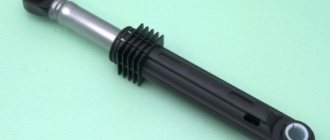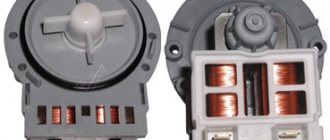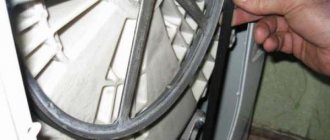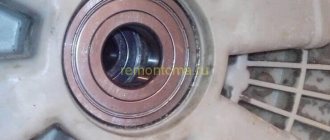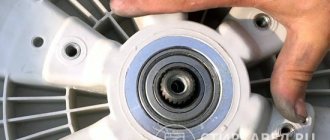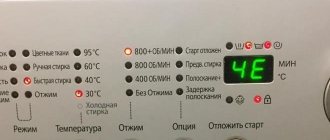Let's look at how to remove the shipping bolts on a washing machine. Transportation of large household appliances must be carried out in packaging using special fasteners. Any washing machine is equipped with shipping bolts that are necessary to secure the tank. They increase the service life of the device, prevent its damage due to impacts or careless handling when climbing to the floor, during transportation, loading and unloading.
If you do not use special fasteners, the drum may touch the inner walls and get defects. This is a dynamic part of the unit, which is easily susceptible to negative influences. In the absence of such devices, bearings with shock absorbers, as well as other components that ensure proper fastening of the tank and reduce its vibration during washing and spinning, may suffer. Transport components are necessary to securely fix the parts of the SMA and protect them from damage.
- How to remove shipping bolts?
- Mounting location
- Appearance
- We clean it ourselves
- Consequences of not removing transport bolts
- Recommendations for transporting the washing machine
- SMA catalog with reviews
Why are bolts needed for transportation?
Conventional household appliances are transported in original packaging and require additional fastenings. But with a washing machine everything is more complicated. Its design includes many moving parts, the integrity of which is compromised without fixation.
In particular, the tank is not screwed to the body, but is suspended on springs - they ensure the mobility of the tank and its shock absorption during operation. If the tank had been attached differently, the machine would have made a noise no worse than a tractor.
And transport bolts are needed only temporarily - for transporting the unit. Elements are provided in SMA of any brands: “Bosch”, “Indesit”, “Siemens”, “Electrolux”, “Zanussi”, “Atlant” and others. The purpose of the fastening is to hold the tank in which the drum is located motionless, so that this unit does not touch other parts during transportation, such as shock absorbers and others.
What do the bolts look like?
The fasteners have a primitive design of three parts: the screw itself, a rubber ring and a plastic insert. They are installed not only on standard front-facing models, but also on vertical washing machines.
Where are the fasteners located?
To determine the location of the clamps, find out the type of loading of the SMA: vertical or frontal. A regular car with a transparent hatch has only one option for their location: on the rear wall.
There can always be surprises with vertical models, so check your owner's manual to make sure you don't confuse the screws with other fasteners. Usually the manual describes in detail where the transportation bolts are located and the dismantling sequence.
According to the standard, there should be 4 screws. Did you find 2 or 3? Don’t be alarmed, this is normal, it means the manufacturer decided that this quantity is enough.
How to transport a car without bolts?
It happens that the bolts for fixing the drum are lost, and the washing machine needs to be transported. In this situation, you will have to secure the machine in other ways. By following the recommendations below, you can reduce the risk of damage to internal machine parts during transportation.
So, if the shipping bolts from your Bosch washing machine are lost, and you need to deliver the equipment to another location, follow these tips:
- Be sure to transport the washing machine in a lying position, with the powder receptacle facing down. Vertical installation of the machine during transportation without fasteners is fraught with loosening of the drum and weakening of the shock absorbers;
- It is prohibited to place the device with the hatch facing up. In this position, the water remaining in the machine can flood the electronics;
- You should cover the drum with clothes, towels or foam to fix it in one position;
- It is important to drain the remaining water from the washing machine through a garbage filter in advance.
Transporting a washing machine without special fasteners is quite dangerous. Therefore, if possible, it is better to entrust transportation to the experts of the service center. Usually the organization provides such a service.
There is no point in buying new shipping screws, especially if they are from a different brand. Retainers are an individual thing. The dimensions and shape of the bolts will differ even between washing machine models from the same manufacturer.
We always approach the process of buying a washing machine very carefully and attentively, studying all the advantages and disadvantages of the models, their technical characteristics, and reading customer reviews. However, many people forget that they need to be no less careful not only when purchasing a product, but also when transporting it. In this case, manufacturers have provided a very useful protective mechanism - transportation bolts.
How to remove fasteners yourself?
When your long-awaited purchase—a washing machine—arrives at your home, do not rush to connect it to communications and start a big wash. Take your time:
- Give the appliance time to reach room temperature, regardless of the time of year.
- If the supply to communications - the drainage system, water supply and electricity - is provided, proceed to “disarm” the machine. If not, read our connection guide.
- Use the appropriate size wrench (or adjustable wrench). And if you have an Ariston, Indesit, Bosch, Elgie or Electrolux car, then the key may be included.
Didn't find the key? Use pliers available in any home.
- Unscrew the screws 3.5–4 cm - not all the way, just loosen them.
- Feed each screw forward, pushing it all the way into the equipment (about 2 cm deep).
- Without removing the bolts, remove the rubber bands and plastic inserts, and then remove the fasteners themselves.
- There will be quite impressive holes in the wall. Don’t leave them like this: moisture can get into the case through them, and a few extra “holes” can affect the noise level. Find plastic plugs in the packaging materials and install them in the holes, pushing them until they click.
More details in the video:
Removing the screws: instructions
So, the car was delivered to the apartment.
Of course, you want to connect the unit and start washing as soon as possible, but it’s better not to rush. First, let the washer “rest” at room temperature for several hours. Next, we remove the factory stickers and set up free access to communications, electricity, water supply and sewerage. We deal with transportation bolts only after all the manipulations described above. The clamps are removed using a special key, which is usually included with any Indesit model. If it is not there, then we find a 12mm head or pliers. Next we proceed like this.
- Loosen the screws by unscrewing them by 3.5-4 cm.
- We push the bolt inside the housing until it rests on a hard surface (on average, a recess of 2-2.5 cm is enough).
- Without touching the screws themselves, remove the rubber gaskets and the plastic tip.
- We close the vacated holes with special plastic “plugs”, which are included with Indesit washing machines. The main thing is to press on the lids until you hear a characteristic click.
But do not rush to throw away the removed shipping fasteners. It is better to pack them and store them along with the instructions and other documentation. They will come in handy the next time you transport the car, if it is sold or moved. Do not forget that it is strongly not recommended to transport machine guns without bolts.
If the bolts are not removed, then...
By ignoring or forgetting about the manufacturer’s recommendations and not removing the fasteners, you risk soon encountering problems such as:
- premature damage to bearings;
- violation of the integrity of shock absorbers (dampers);
- failure of other components and parts adjacent to the tank.
But the machine will remind you that the screws are still in place. Its body will vibrate excessively, and when spinning, it may even “jump away” from the installation site. There will be noise, hum, knocking - you will 100% notice it.
Important! Found that SMA was working with bolts? Remove them and call a specialist to assess the damage caused by careless installation of equipment. Maybe everything worked out fine, or maybe your equipment is almost unusable or requires repair.
How to install
When moving to a new place of residence or if the washing machine breaks down, it may be necessary to transport it. The device must not be transported without replacing the bolts removed before use.
Before installing fasteners, the device should be disconnected from communications and freed from residual water. Then remove the plugs and complete the fastening with 2 sealing washers and a safety pad. The bolts must be inserted into their original places so that their ends fit into the threaded holes on the inside of the housing. The process is completed by carefully tightening the fasteners with a wrench.
How to organize transportation if fastenings are lost?
We have already written about the correct transportation of the washing machine, but it is worth paying special attention to transportation without bolts - over the years of using the machine, they are easy to lose. To maintain the integrity of internal components when packing, loading, moving, descending and ascending to the floor, follow the recommendations of specialists:
- Place the equipment horizontally or on its side (with the powder receiver facing down). Vertical loading is excluded - in this case the tank will become loose, which can lead to internal damage.
Important! The position with the cuvette up is prohibited: water that remains in the detergent receptacle may leak onto the board, causing irreparable damage to the electronic control panel and module.
- Wrap the drum with cloth or foam rubber, you can put pieces of foam plastic.
- Drain the water from the filter and hoses to protect the electrics.
There is no need to go to the trouble of buying screws from other brands. After all, fasteners from Siemens may not fit an Ariston machine. Sometimes, even in the model range of the same brand, bolts are produced in different lengths and diameters and may not fit similar models. Thus, Electrolux produces screws for its machines with a diameter of 6 to 10 mm.
Now you know that transport elements are irreplaceable “guards” of AGR parts, saving them during transportation. Don't lose it and don't forget to remove it before connecting.
Both the factory instructions, the loader, and the store consultant warn: if you do not unscrew the shipping bolts before using the washing machine, inevitable problems will arise. But not everyone knows what exactly awaits inattentive washing machine owners. We propose to understand what consequences can result from fasteners that are not removed in time.
Functions of the transport fastener
The design of washing machines is such that the tank with a metal drum inside swings freely inside the body. For washing this is an excellent solution, but for transportation it is a disaster. Any shock to a steel machine can damage the drum, especially if it is made of plastic.
To prevent this from happening, the machine is equipped with transport fastenings - bolts with a hex head and two washers. They fix all the insides of the unit and prevent its damage.
The diameter of the bolts is 12–14 mm. In some brands there are fasteners with a diameter of 10 mm. The rubber washer is in direct contact with the body, and the steel washer tightens the fastening. The bolt is also fitted with a special plastic cylinder, which fills the small space between the machine body and the internal parts, rigidly fixing the elements.
What can break?
Removing the shipping bolts is a matter of minutes, but simple haste and inattention can play a bad joke on the owner. After all, if you forget about the fasteners, you can forever lose the machine you just purchased or get yourself into trouble with the warranty and further operation. This perspective can be explained simply.
The bolts used during transportation are designed to secure the movable drum of the washing machine. This prevents it from sagging and rotating during transportation and ensures safe and sound delivery. But starting a cycle with the drum stationary will only do harm:
- convulsive “jumps” around the room;
- uncontrolled vibration;
- loud knocks.
All this is the most harmless thing that will happen in this case with the washing machine. More often the matter ends much worse - the drum is damaged, and the machine itself fails.
Strong vibration will cause enormous loads on all elements of the washing machine, and especially on the bearing assembly and motor.
It is forbidden to turn on the washing machine with transport bolts precisely because of excessive fixation. The drum clamped with screws does not “hang” on vibration-softening shock absorbers, and all shocks from the accelerated motor go directly to the body. The situation is aggravated by the imbalance of the laundry, which crumples and causes random shocks. The type of drive does not matter - non-functioning dampers will harm both direct-drive machines and belt-driven vehicles.
It’s easy to avoid an unpleasant prospect - just remove all the transport bolts in time. Or check the work of the installers: look at the back panel of the machine and make sure that there are closed or unclosed holes in their place. If you can’t find the grooves for the fasteners, you can look at the instructions and check the data sheet. As a rule, four large screws are used for fixation, the absence of which is easy to notice.
What problems can occur if transportation rules are violated?
All recommendations described above must be strictly followed. If you suddenly forgot to provide for something, then transportation may result in expensive repairs, or even the purchase of a new machine.
Here are the main options for the outcome of incorrect transportation:
- a loose power cord can be broken;
- poor-quality packaging of the case can lead to breakage of plastic parts;
- when transporting with support on the front cover, you can get a torn cuff or breakage of the loading hatch fastening;
- a loose or poorly secured drum can lead to repairs to shock absorbers, replacement of bearings and breakage of body panels;
- poorly installed rubber parts can be torn during transportation;
- if you forgot to drain the remaining water, be prepared for failure of the electronic unit, interruptions in power-on due to oxidation of contacts and short circuit of the wiring;
- transporting the “washing machine” upside down guarantees damage to the drain pump;
- If you forgot to secure the powder container with tape, then with a high degree of probability you will bring it broken.
The fate of the guarantee
Even running a washing machine once with transport bolts will forever deprive the owner of the warranty provided to the machine. Washing with fasteners not removed is a direct violation of one of the main requirements of the instructions, which leads to automatic termination of the warranty period. Therefore, if the consumer wants to repair third-party breakdowns at the manufacturer’s expense, the consumer will receive a reasoned refusal from the service center.
It will not be possible to hide the fact of a violation of the warranty. If you do not remove the transportation bolts and start the machine, then characteristic damage will remain on the drum, which is easy to notice even with an unprofessional eye . Any further repairs will have to be paid for out-of-pocket.
Monetary losses are also expected when selling a washing machine. Attention is paid to the condition of the drum first of all, and there is a high probability that after an unsuccessful start, an unpleasant knock and increased vibration will remain. Therefore, it is better to spend time and double-check again than to go to the store for a new machine.
Manufacturers of large household appliances pay great attention to the safety of their products on the way to the end consumer. High-quality packaging almost completely protects the units from any external damage, provided, of course, that transportation rules are followed. At the same time, due to the design features, the washing equipment contains devices that prevent damage to internal parts and mechanisms. Regardless of the type, each washing machine on the assembly line is equipped with transport bolts.
Recommendations
When installing a Bosch washing machine, the following recommendations may be useful:
- If tap water is not of adequate quality, it is advisable to install a filter to purify it at the entrance to the apartment. This will prevent foreign particles from entering the washer.
- When tapping into a water supply system to draw water to the machine, it is necessary to provide for the installation of a tap that shuts off the water.
- When starting up the washing machine for the first time, you should not put things in the drum, as they may become dirty after processing due to the fact that the new washing machine contains grease and other technical liquids that remain after the production and assembly of the device.
What are shipping bolts?
Transportation fastenings are a type of fastening made in the form of threaded pins, at one end of which there is a head for a certain size and type of key. The configuration and size of the product head can be different and depends on the manufacturer, but in most cases it is a hexagon wrench ranging in size from 10 to 17 mm. A pressure washer and soft polymer or plastic bushings are installed on the threaded part of the bolt, which act as dampers and clamps to ensure a tight connection between the parts of the household device.
Functions of the transport fastener
The main functional purpose of the fastener is to protect the parts of the washing machine inside the housing from damage during transportation. The tank and drum of any washing equipment are attached to the body using special springs and shock absorbers. They dampen vibrations that occur during the operation of the machine and have a certain free movement.
If the washing machine is installed and connected correctly, and washing is carried out in compliance with the operating rules, the free play values are within the limits that prevent damage to the internal parts. However, when transporting the unit, sharp impacts and falls are possible, which may result in displacement of the drum, breakage of various fasteners, and disruption of the functions of bearings and seals. In order to prevent internal damage, transport fastenings are used to ensure rigid fixation of the drum in the equipment body.
Unremoved bolts: possible consequences
The fixing screws must be removed before putting the machine into operation. Otherwise, over time, the bearings and spring system will fail, followed by other parts of the equipment. This is noticeable already during the first wash:
- the machine vibrates strongly and moves along the floor throughout the entire cycle;
- work is accompanied by strong noise and extraneous sounds.
If fasteners were discovered after the washing equipment began operating, you need to remove them and call a technician to assess the integrity and functionality of the internal parts. After inspection, the specialist will tell you whether the machine can continue to work.
Where are the fasteners located and how to remove them?
Most household washing machines have several technological holes on the back cover intended for installation of transport bolts. Their number usually does not exceed six, but most models have four transport bolts.
For example, Samsung washing machines typically use a four-location locking pattern. Since the back wall of any unit is not overloaded with an abundance of elements, it is quite easy to find fasteners. In addition, their location is necessarily indicated on the diagram in the operating instructions, so it is best to start getting acquainted with your new household assistant with it.
In some models, fixing elements can be installed at the bottom of the unit, so the instructions will not only help you accurately determine the number and location of fasteners, but will also clearly demonstrate what all parts of the fastening look like.
Removing the transport fastenings
The fastenings are removed immediately before the operations of connecting and installing the equipment in its original place. Unscrewing the bolts must be done using a wrench of the required size. You can also use a universal adjustable wrench, or a special wrench supplied with the washing machine.
Location of fixing elements
There are two types of ways to load fabrics into the machine: vertical and frontal (horizontal). Find out what type of load your model has to determine where the shipping bolts are in the washing machine:
- The transport bolts on a vertical washing machine can be located either at the top of the case or on its rear wall.
- For machines with horizontal loading, there can only be one location: on the rear wall of the housing.
The last option is most typical for all models, regardless of their technical characteristics. If you have difficulty finding the location of the bolts, look at the instruction manual, where you can find not only information on locating them, but also on how to remove the transport bolts on a washing machine.
There are usually four locking elements in the machine. But maybe two or three. They are located behind the drum on the sides of its body (arrows in the photo show the location of the bolts).
What will happen if the bolts are not unscrewed?
In each instruction, the installation of washing equipment is described step by step, and the removal of transport bolts is prescribed as a mandatory procedure. If they are not removed, the unit will not operate correctly. When the drum is rigidly attached to the body, damper devices cease to perform their functions, which causes increased vibration during operation. This is especially noticeable in spin mode. In this case, the unit may move from its place, which in some cases leads to a break in the electrical, water and sewer connections.
The washing machine is quite heavy, and at high spin speeds its uncontrolled movement around the bathroom or kitchen can lead not only to breakdown of the household appliance, but also to damage to plumbing fixtures or interior items.
Instructions for transporting the machine
Washing equipment for which the transport locks have been preserved is easy to transport. It is enough to remove the plugs and secure the drum with fasteners. Thanks to this, during the move it will not dangle and touch adjacent parts. But the latches are lost, and the machine needs to be transported. Experts recommend following simple rules:
- For transportation, the washing machine must be placed on its side with the ditch down. Horizontal position is allowed. Equipment cannot be placed vertically, as the tank will become loose, damaging neighboring mechanisms.
- The drum must be covered with foam rubber, thick fabric or polystyrene foam.
- The machine should be completely free of water to avoid damage to the electrical components of the equipment.
How to transport a washing machine correctly?
A washing machine is a unit designed for a long period of operation, therefore, for various reasons, during this time it may be necessary to transport the washing machine from one place to another. Minor faults that arise during operation can sometimes be fixed on the spot with your own hands, but in the event of a serious breakdown, transportation to a service center is inevitable. When preparing for transportation, to protect the external parts of the unit, you need to take care of reliable packaging. To prevent damage to internal parts, it is worth installing the saved bolts in their place.
How to transport a washing machine without transport bolts?
It happens that you urgently need to transport your car, but there are no transport fastenings, and there is simply no time to look for them. You can fix the tank without them; for this you will need soft materials with which you will need to surround the tank on all sides until it is completely immobilized. For example, you can use rags or foam rubber. To get to the tank, you need to remove the top cover of the machine. This is easy to do, just unscrew a few screws from the back, pull the cover towards you and lift it up. After the cover is removed, you can begin the above operations to fix the tank.
Call the master
If you cannot connect a Bosch washing machine yourself, you must use the services of a specialist.
You can find a company on the Internet. It is better to trust companies that have been operating in the service market for a long time and have a reliable reputation.
The price list of individual companies may have significant differences, and it is better to clarify such information with the company’s dispatcher. The cost of work depends on the volume and complexity.
If all communications have already been removed, then a master in the capital can charge from 1000 rubles . Installing a built-in washing machine will cost more (from 1,500 rubles).
In the case where communications are not installed and preparatory measures are required, the cost of the work increases significantly - up to several thousand. Additional details, if they are needed when performing work, are paid for separately by the customer.
When calling a technician, you should indicate the manufacturer of the washing machine, the model of the device and whether communications are connected.
Fastening devices. What are they needed for?
To minimize the risk during transportation, they are installed at the manufacturer’s factory, and even with various inclinations during transportation, the internal parts do not contact each other, because the bolts hold the tank in one position.
Article on the topic: Is it possible to wash a bath mat in a washing machine?
Thanks to this, shock absorbers and bearings also remain intact.
These are very important elements of a washing machine, as they reduce the amount of vibration during washing and spinning.



